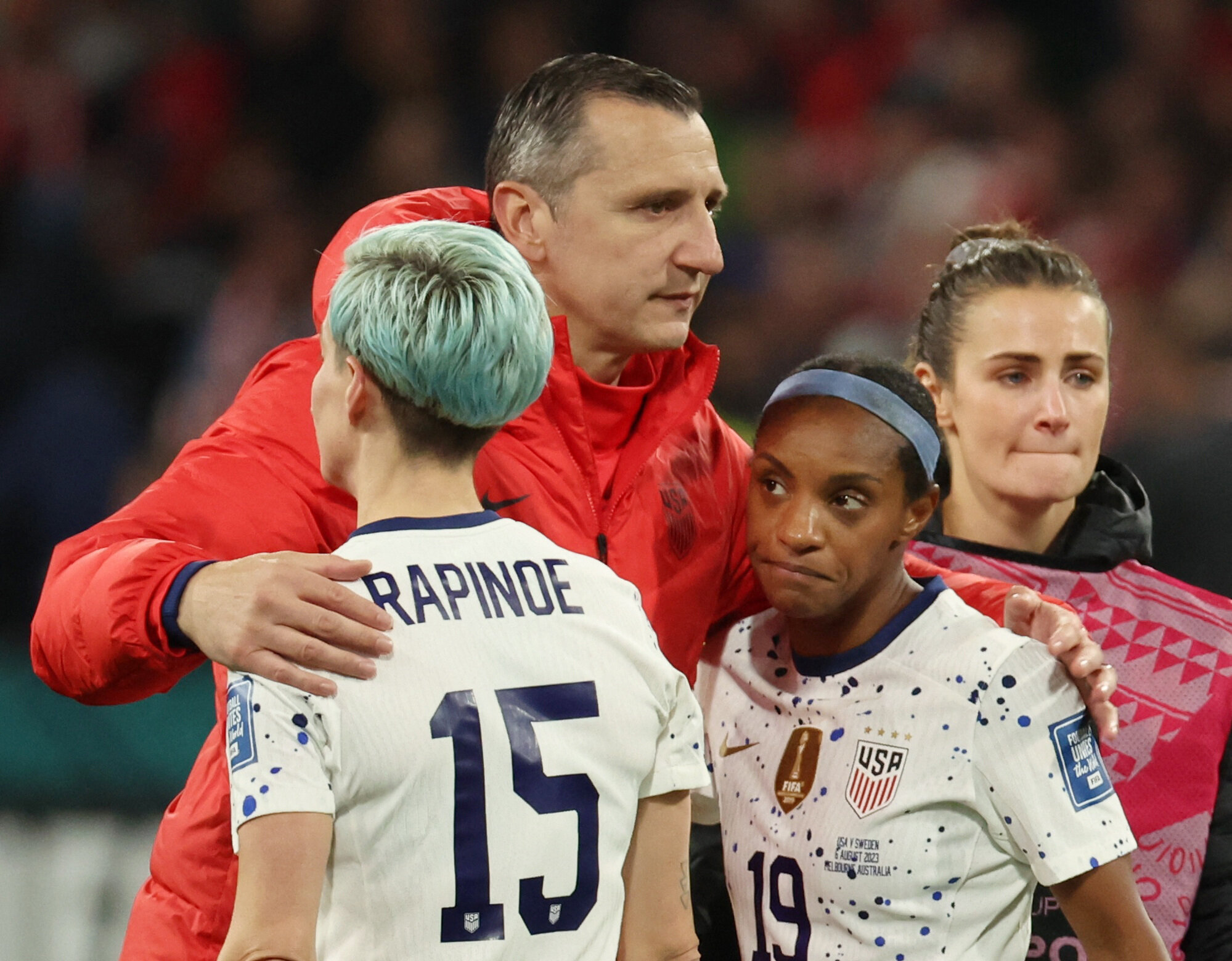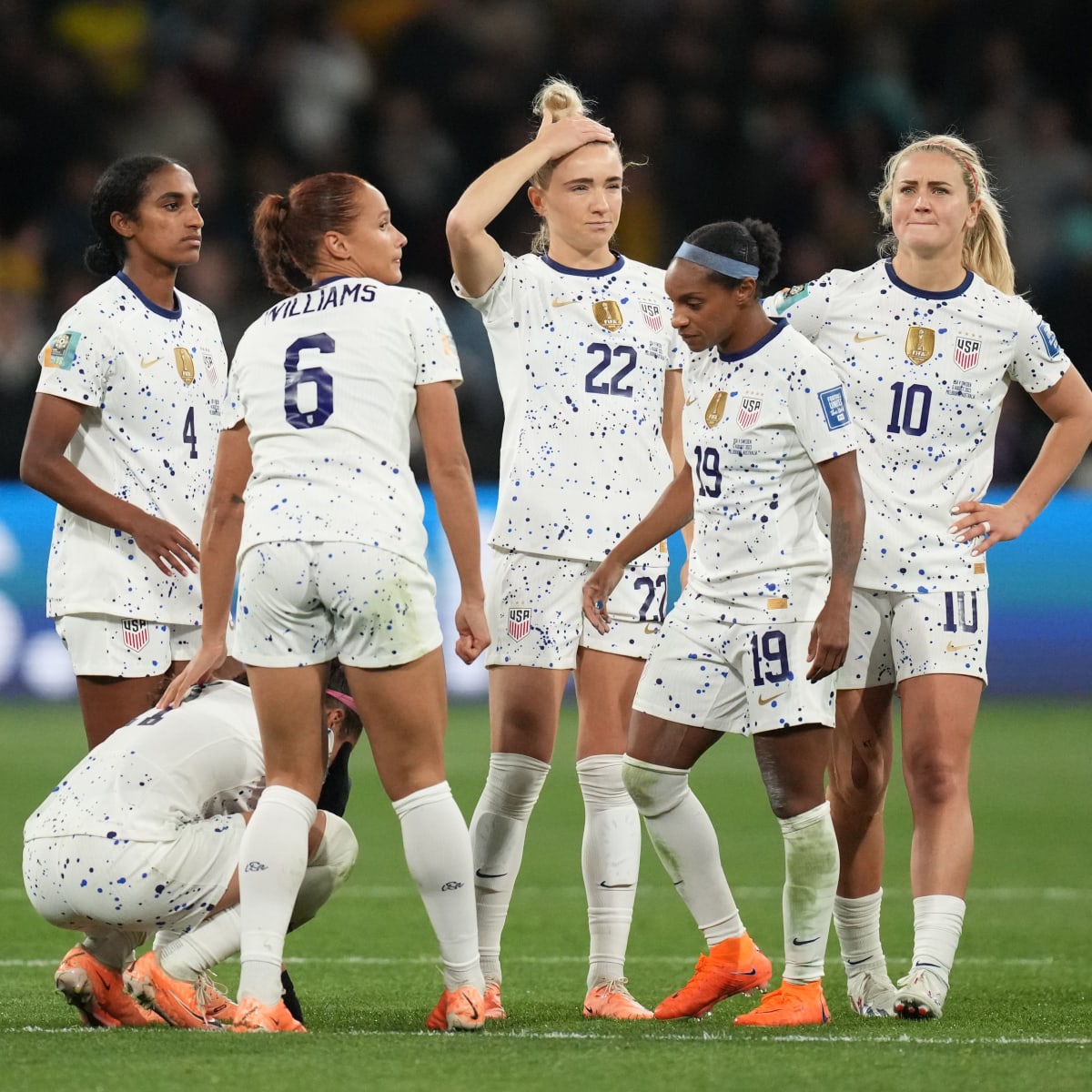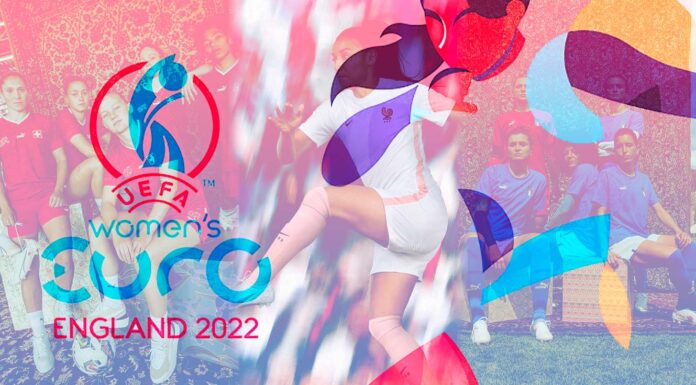There are many questions surrounding the USWNT, but perhaps the loudest one is, who will be the next to take the helm?
That the United States women’s national team will go into the 2027 FIFA Women’s World Cup with a different coach from the one who led them this summer in Australia and New Zealand isn’t altogether shocking. After all, in the previous eight Women’s World Cups, this side has competed under six different coaches. Where the territory becomes uncharted is the circumstances under which this coaching search will be conducted.
Half of the eight Women’s World Cups prior to the one just concluded have ended with the U.S. women lifting the trophy. On another occasion (2011) they reached the final, only to fall to the Japanese on penalties. The remaining three tournaments (1995, 2003, and 2007), all of which ended in defeat in the semis and victory in the third-place match, represent the USWNT’s nadir on the world stage.
At least they did until about a month ago.
Vlatko’s Last Stand

The USWNT headed Down Under not only in search of a fifth World Cup trophy, but also seeking to become the first side ever to claim the top prize in three consecutive tournaments.
Sure, the previous two triumphs came on the watch of Jill Ellis, now president of the NWSL’s San Diego Wave FC. And their injured list — which included captain Becky Sauerbrunn, do-it-all midfielder Sam Mewis, and dynamic goal scorers Mallory Swanson, Christen Press, and Catarina Macario — basically read like the roster of a tournament favorite. Even more, Rose Lavelle and Megan Rapinoe, who would be taking part in her fourth and final World Cup, were only just returning from injuries of their own.
And yes, under coach Vlatko Andonovski, the USWNT had cratered to the unfathomable depths of Olympic bronze in 2021, and seemingly never settled on a completely coherent plan, especially in midfield.
It is worth mentioning that Andonovski was not some comical downgrade. This is, after all, a man whose coaching resume includes a pair of NWSL Championships (with FC Kansas City in 2014 and 2015) and NWSL Coach of the Year honors in 2013 and 2019. During the latter of those campaigns, Andonovski earned praise for leading an OL Reign team decimated by injuries and the 2019 World Cup participation to the league’s fourth-best regular season record.
And the USWNT did roll into the World Cup having won 50 of their last 61 matches (with only four losses), four consecutive SheBelieves Cups, and a 10th CONCACAF W Championship (the competition has been held 11 times) in three-and-a-half years under Andonovski’s guidance. And, for whatever it’s worth, the U.S. had actually outplayed Canada in their 1-0 semifinal loss in 2021 the Olympics.
The side also still featured the likes of Alex Morgan, Kelley O’Hara, Julie Ertz, Alyssa Naeher, Lindsey Horan, Crystal Dunn, Lynn Williams, and the hilariously talented young trio of Trinity Rodman, Naomi Girma, and Sophia Smith.
Thus, despite the tactical questions and the Olympic debacle of ‘21, the USWNT unsurprisingly kicked off in Auckland on July 22 as favorites to complete the first-ever World Cup three-peat.
Alas…
Stubbornly Searching for Something

It was clear long before O’Hara’s missed penalty ended the round of 16 shootout against Sweden that this was not a vintage USWNT side.
The tournament started out well enough, with a victory over Vietnam, whose 3-0 scoreline rather dramatically downplayed USWNT’s dominance. The Americans not only won the possession battle 72%-28% but outshot the Vietnamese 27 (eight on target) to zero, and mounted 214 attacks (105 of them “dangerous”), compared with 37 and five. It could’ve been more, and probably should’ve been more (Morgan failed to convert a penalty in the 43rd), but, all in all, it was a perfectly acceptable opener.
Now, one might have questioned Andonovski’s decision to start Ertz, a midfielder, at center back over Alana Cook, an actual center back and a former teammate of Girma’s at Stanford. Similarly, one could wonder why Emily Fox, a left back, was slotted in out of position on the right. Also, the decision to leave super-sub Williams, whom Andonovski himself had referred to as “the best 15-minute player” he could have on the roster, on the bench altogether could have raised some eyebrows. But, overall, fine.
My friends, at no point over the two weeks that followed were these questions answered to anyone’s satisfaction.
In the next match, against co-favorites in Group E, The Netherlands, nothing changed. Literally. Ertz remained at center back. Fox remained on the right. In fact, for the first time in group play since 1999, the UWSNT had a completely unchanged World Cup starting XI from the previous game. Williams remained on the bench, for all 90 minutes, along with every other USWNT substitute outside of Lavelle, who came on in the 46th.
This despite the U.S. not only conceding a 17th-minute opener to Jill Roord but getting clearly outplayed by the Dutch, especially in the midfield on the counterattack, for the game’s first hour. That the Dutch failed to add a second obscures the extent to which they, fairly comfortably, kept the U.S. at bay during this spell.
The tide turned around the hour mark. That’s when Horan, after colliding and having some words with her club teammate at Lyon, Danielle van de Donk, directed a gorgeous Lavelle cross into the net to equalize.
The last quarter of the game belonged to the Americans. However, they, like the Dutch in the first half, failed to capitalize. First, a Morgan goal was negated by the offside flag. Then, Rodman missed wide after a one-on-one with Dutch keeper Daphne van Domselaar. Finally, a Lieke Martens header denied Smith a spectacular volleyed goal. The result was a totally justifiable draw, and one that ought to have lit a fire under the U.S. heading into their group finale against Portugal.
Again, Andonovski persisted with Ertz at center back and Fox on the right. And though he started Williams against Portugal, the move was too little, too late. It was clear that the Gotham FC forward hadn’t seen the pitch all tournament and she could never find a foothold. These moves (and non-moves), along with Andonovski’s insistence on sticking with increasingly exhausted versions of Smith and Rodman and a far-from-her-best Morgan, resulted in a subpar showing.
The USWNT was once again outplayed in their group finale by an exciting and ascendant Portugal side. This time, it put them in the alien position of having to fight for a pass to the knockout stage. In fact, in the 92nd minute they came within an inch of becoming the first USWNT side ever eliminated in the group stage, when Ana Capeta pounced onto a flick-on and thumped a shot that beat both Fox and Naeher, but ricocheted off the bottom of the right goalpost.
That close call with disaster, combined with the Netherlands dishing out 7-0 hammering to Vietnam, set off alarm bells around this team. In the Americans’ defense, they responded with an excellent showing (though, apparently, no thanks to Andonovski). Against Sweden in the round of 16, the Americans had nearly 60% possession and margins of 22-9 in shots and 11-1 in shots on target, which theoretically would be enough to secure a win. Except, thanks to an heroic performance Swedish goalkeeper, Zecira Musovic, the USWNT couldn’t put the ball in the net.
Misses from Smith, Rapinoe, and O’Hara in the shootout following the goalless draw made for an absolutely brutal way to exit the tournament.
A quick aside. Not one of these women owes anyone an apology:
The Bitter End
It may be a “sick joke” that ended their World Cup but it’s tough to argue that, on balance (and certainly by their own standards), the USWNT “deserved” a spot in the quaterfinals.
Though there were pockets of excellent play (most notably from Girma), the USWNT’s performances Down Under were often sloppy and lacking both bite in attack and fresh ideas. In fact, they often seemed to lack an actual, coherent plan. This, along with lineups selections and a substitution pattern by that were comical in their rigidity, rightly landed Andonovski under the microscope.
Ten days after his team’s World Cup exit, Andonovski read the room and tendered his resignation.
Despite his 51-5-9 record, successes in the SheBelieves Cup, and terrible luck with the injuries to central figures Swanson and Macario, the case for keeping Andonovski around — which included Olympic bronze, a single non-penatly major tournament knockout win, just four combined wins in 10 Olympics and World Cup matches, and the USWNT’s worst-ever World Cup finish — wasn’t a particularly compelling one.
Change Comes Gradually… And Then All At Once
For the time being, the side will be led by assistant Twila Kilgore. There is, however, the matter of determining the USWNT’s future, from the top down. The search for the ninth-ever USWNT coach will be led by U.S. Soccer’s new sporting director, Welshman Matt Crocker. In his previous roles at Premier League club Southampton, Crocker is credited with perennially keeping the club in the top flight on a decidedly not Premier League budget and, in his previous role as academy director, overseeing the development of players like Gareth Bale and James Ward-Prowse.
On the pitch, there’s also a changing of the guard in progress. Rapinoe is now retired and Naher (age 35) and Morgan (34) are presumably entering the twilights of their careers. The Swanson–Smith-Rodman-Girma generation is already well-established, but this is still a period of transition that must be managed.
One could construct a case for this being an ideal moment to step into this post (make no mistake – there is never a bad time to coach the USWNT), with perhaps a sense of freedom in no longer having to be invincible. I think there’s a little something to this. Unfortunately, this philosophy is one that pervades the uppermost reaches of ultra-competitive fields.
The reality is that the next USWNT coach will have less than a year to prep for the 2024 Olympics in Paris, where the pressure to win gold will be nearly unfathomable. This, again, in the midst of a changing of the guard, and with the side’s most high-stakes World Cup ever looming in 2027. The pressure to recapture past dominance, and do it quickly, is going to be crushing.








